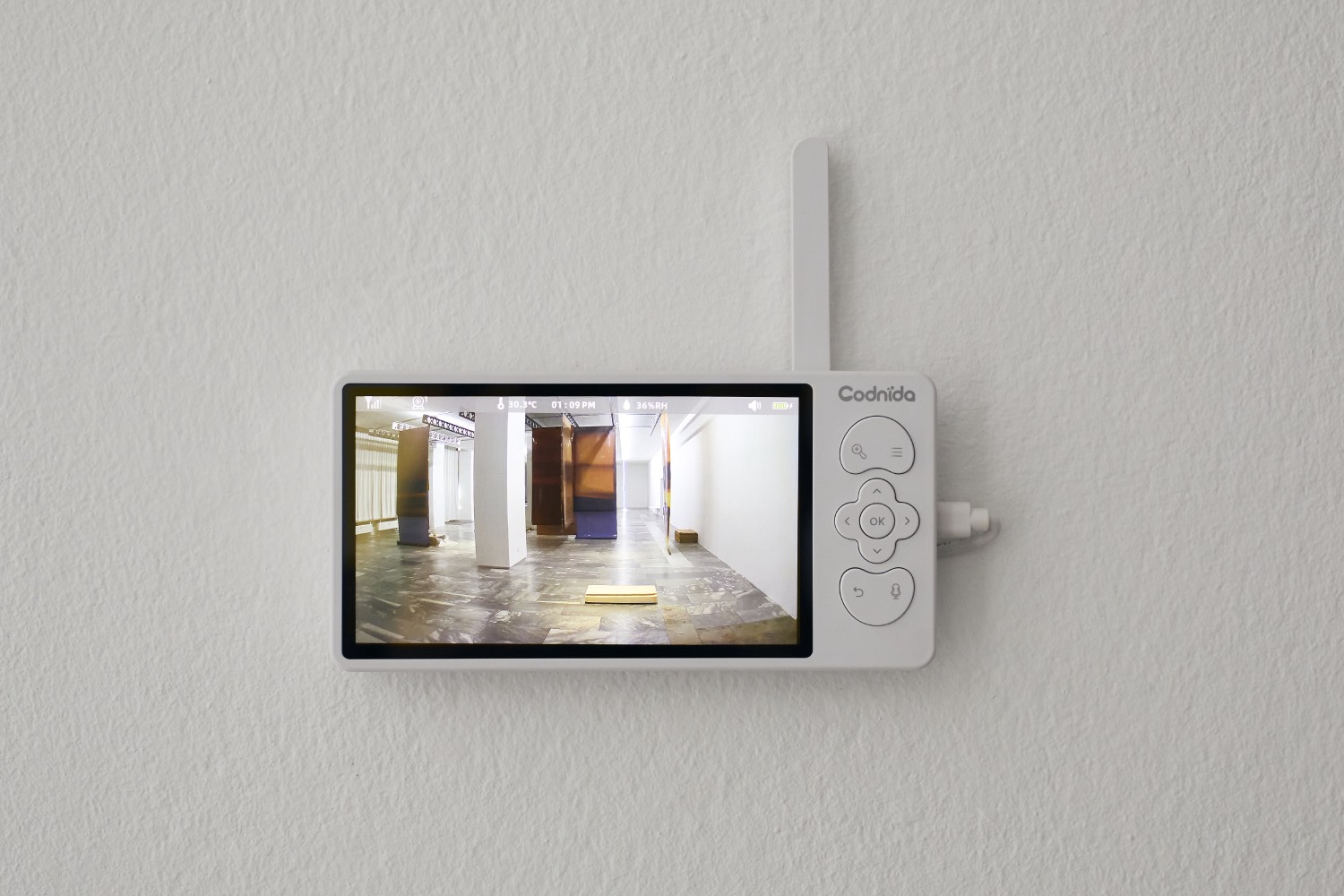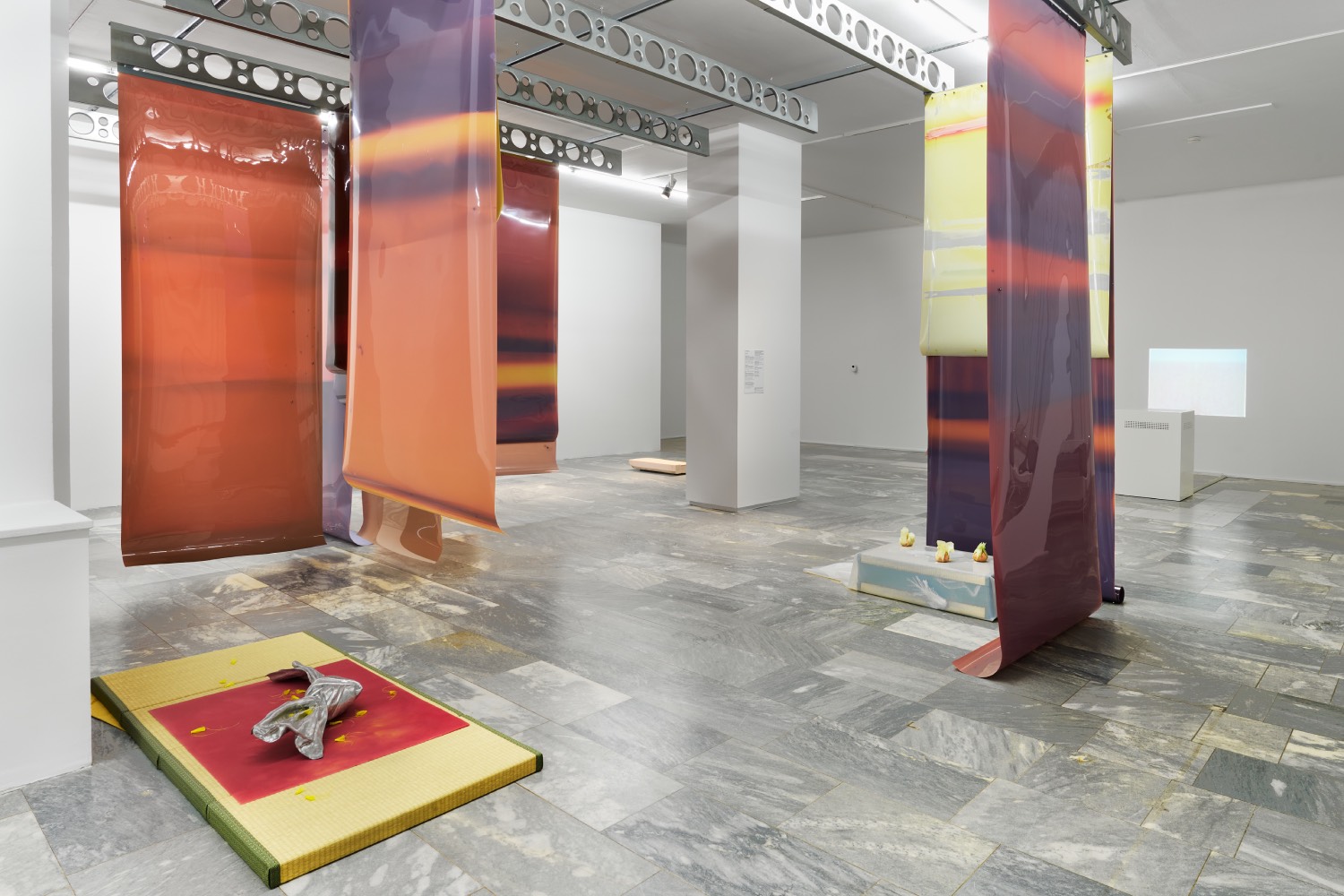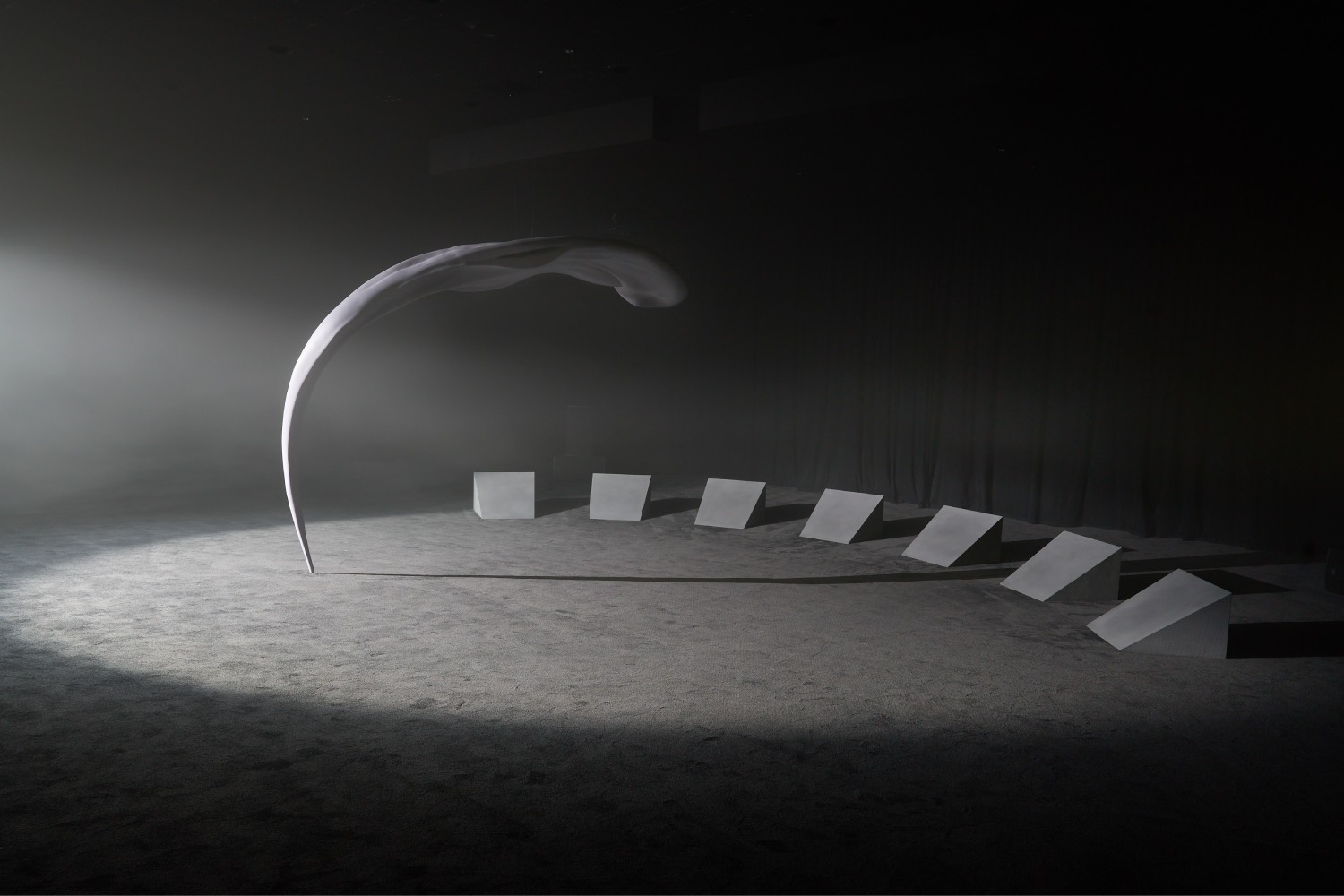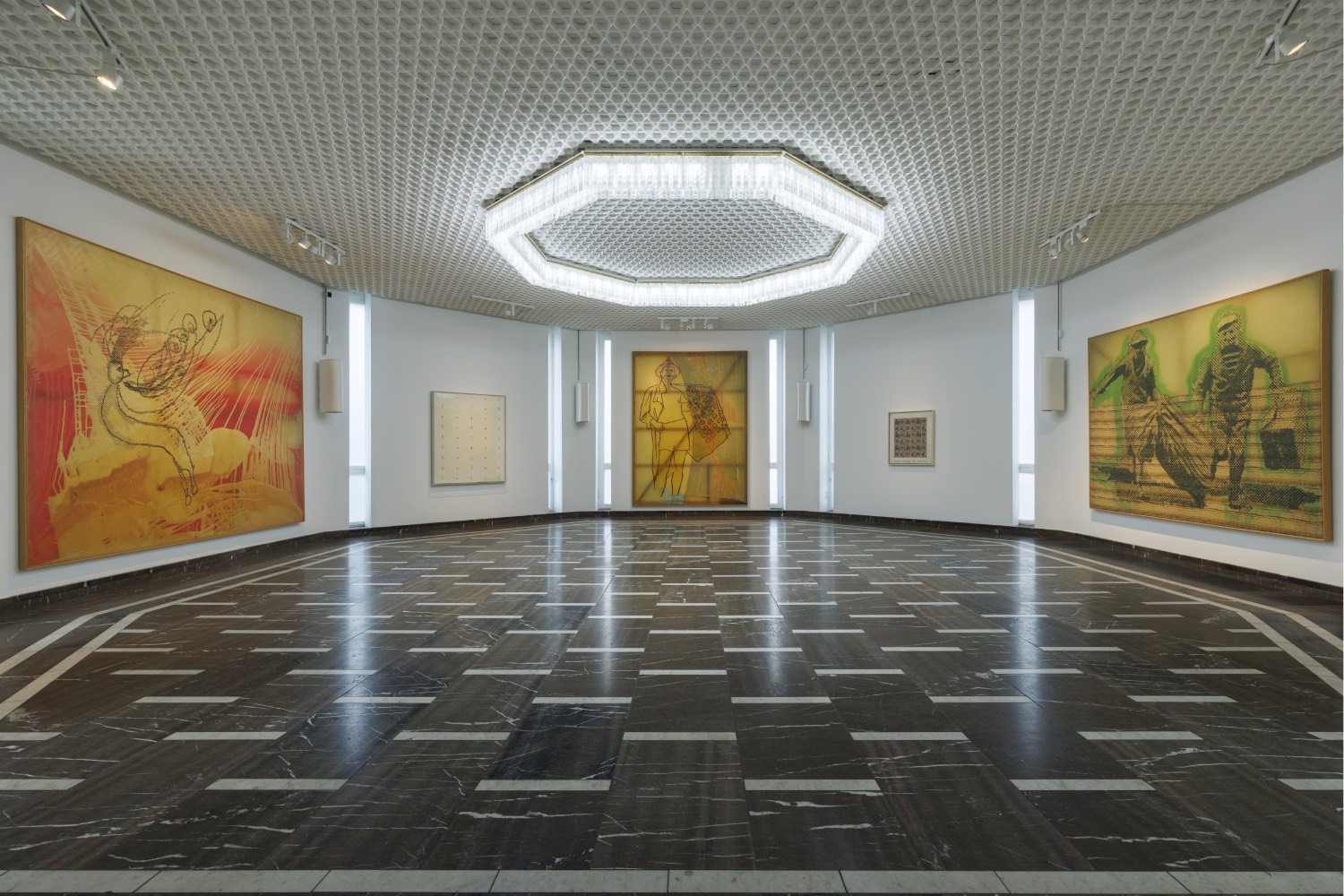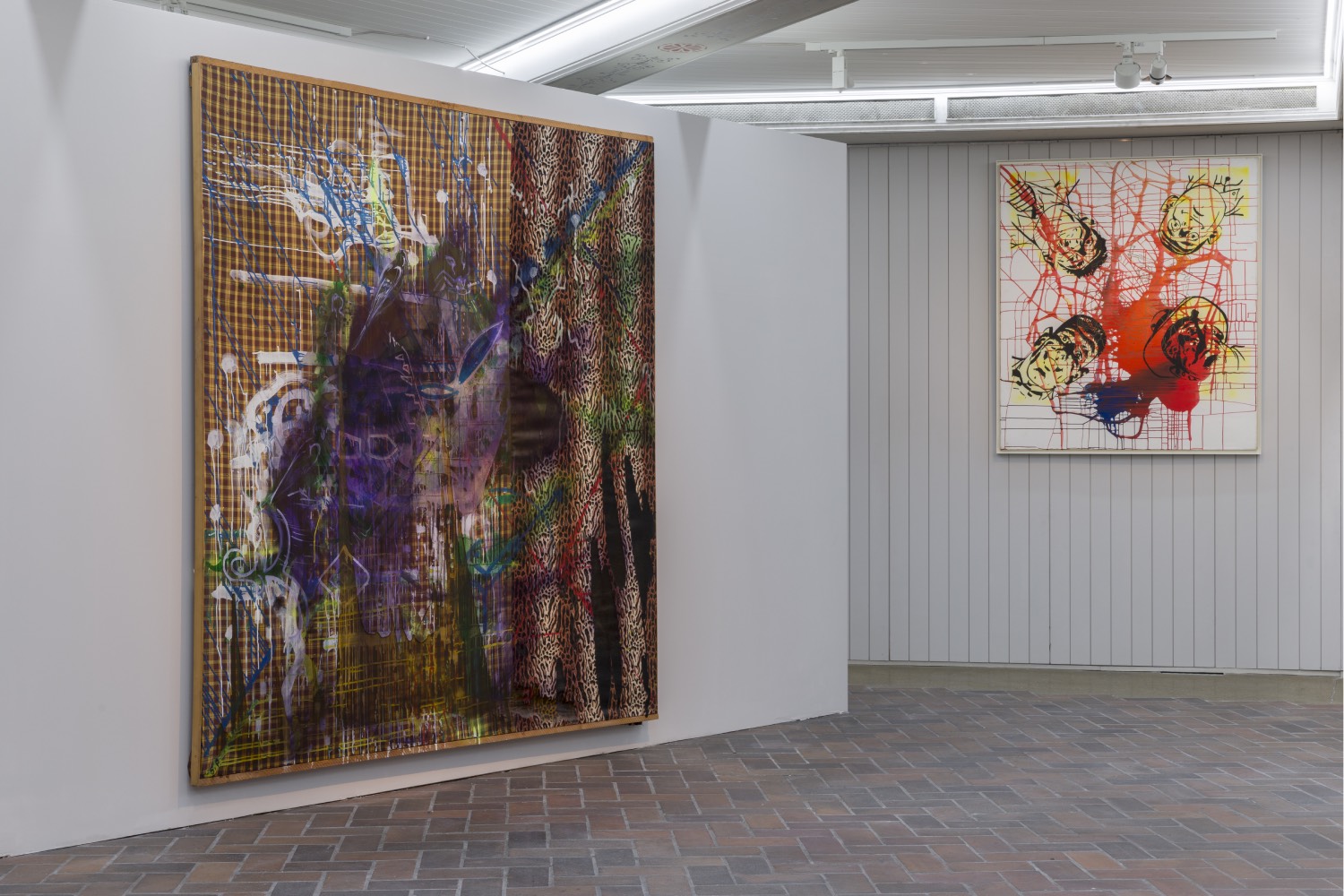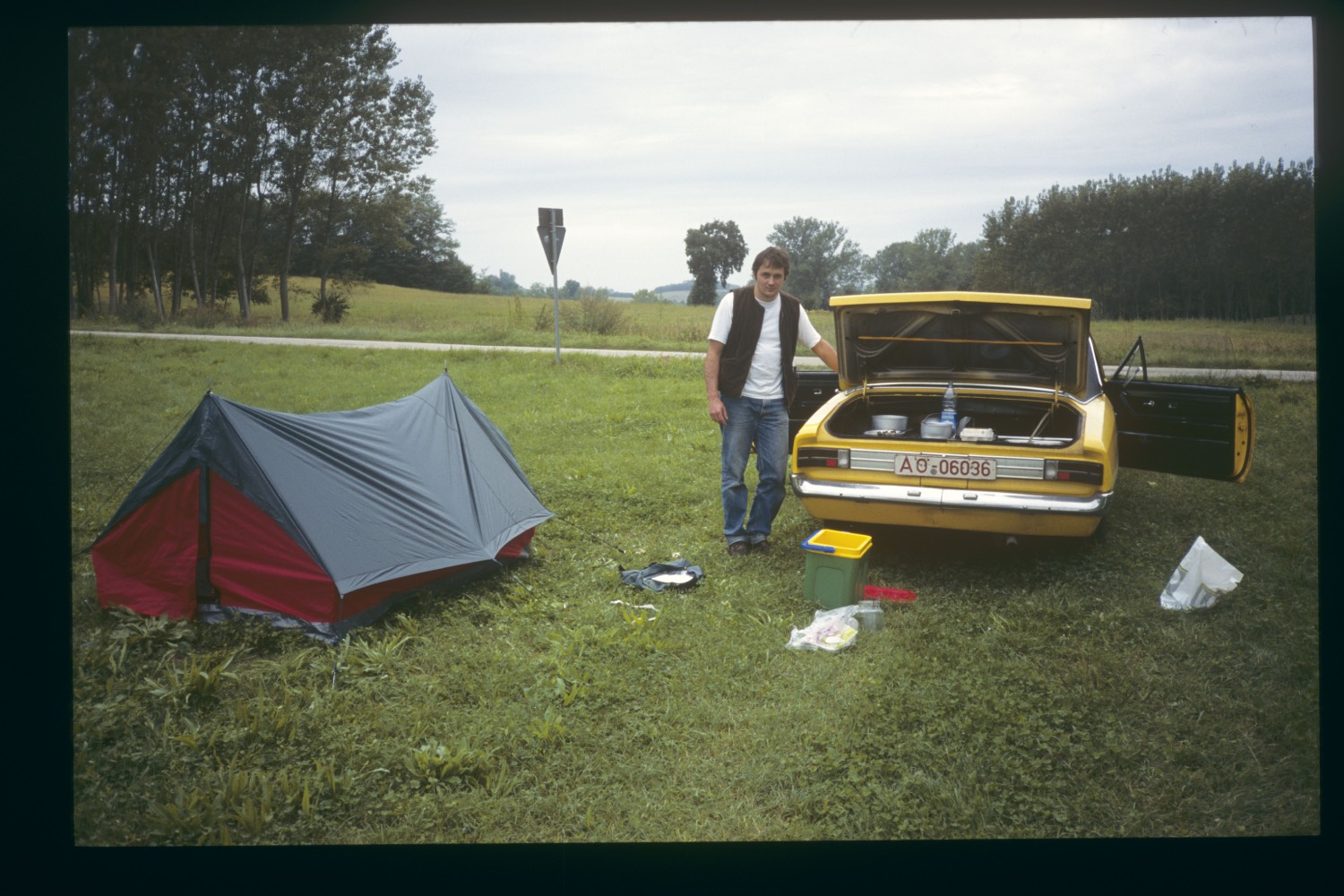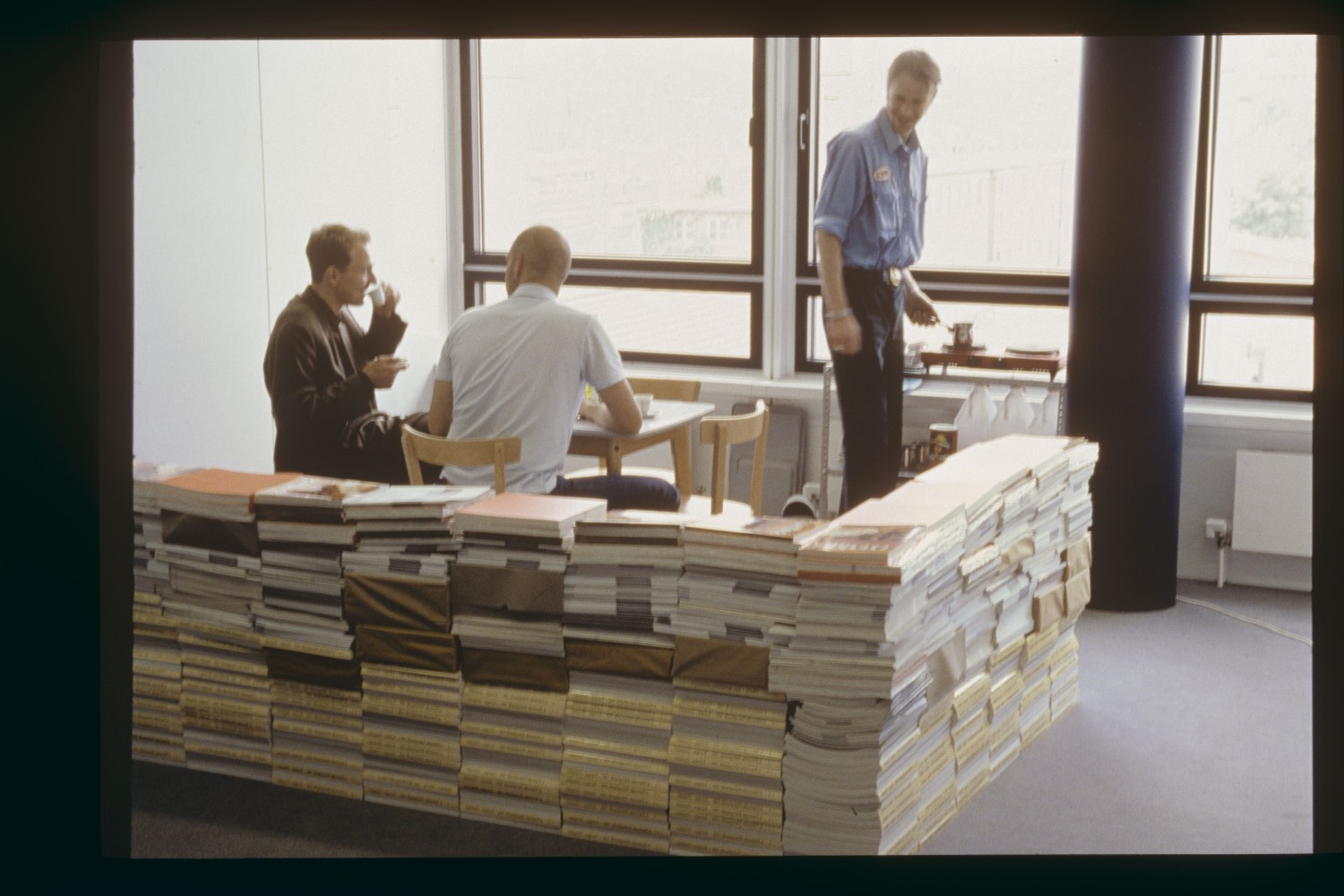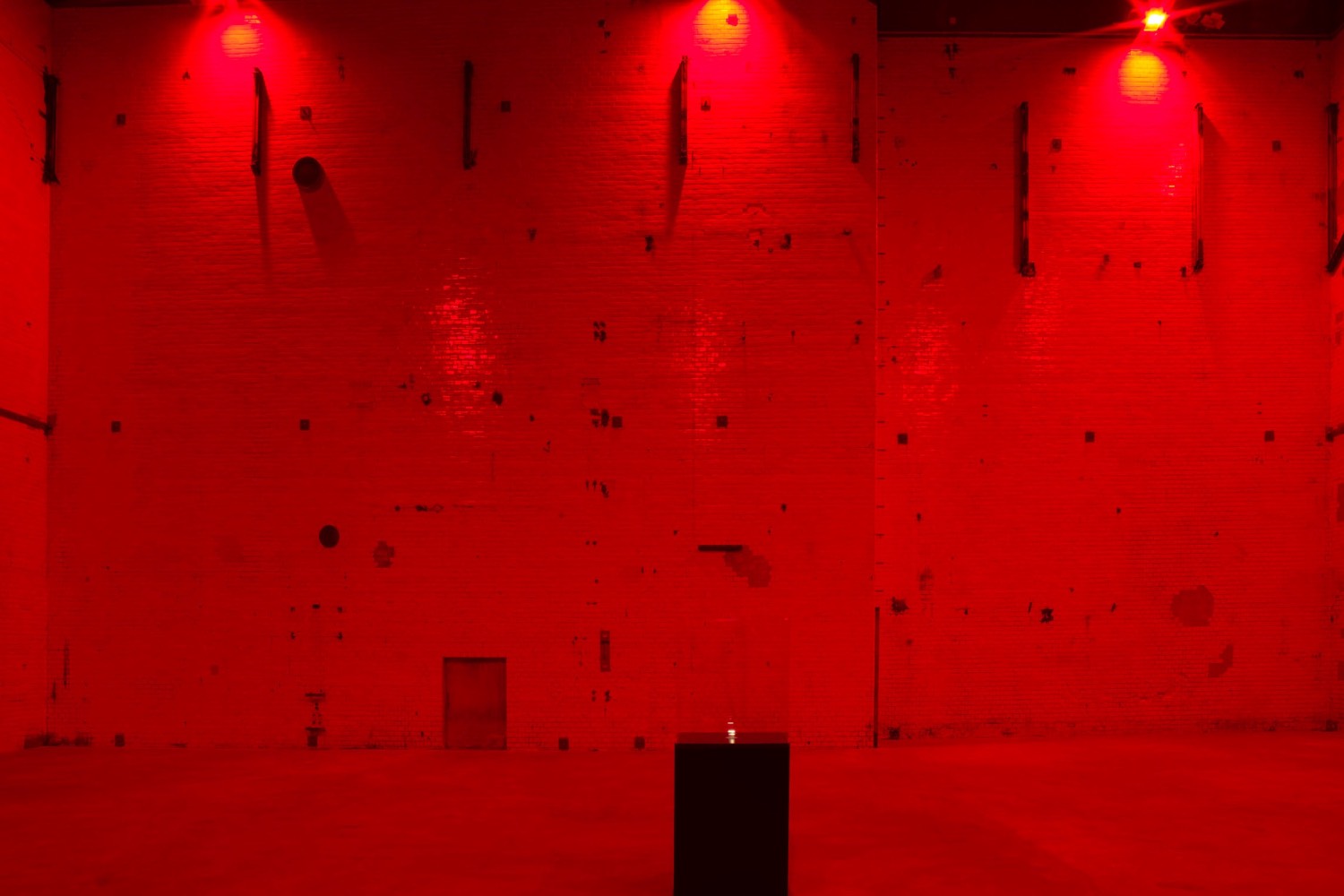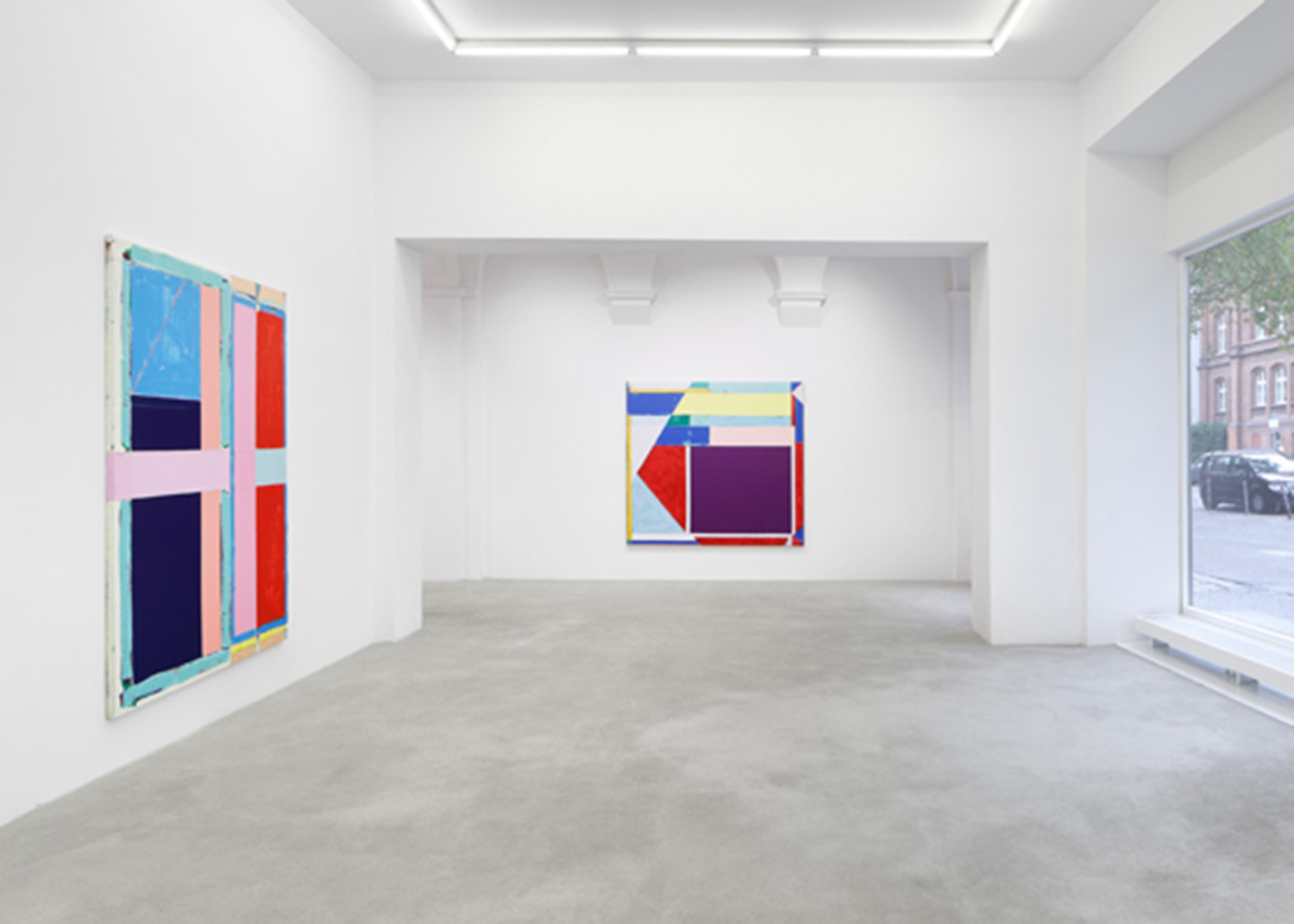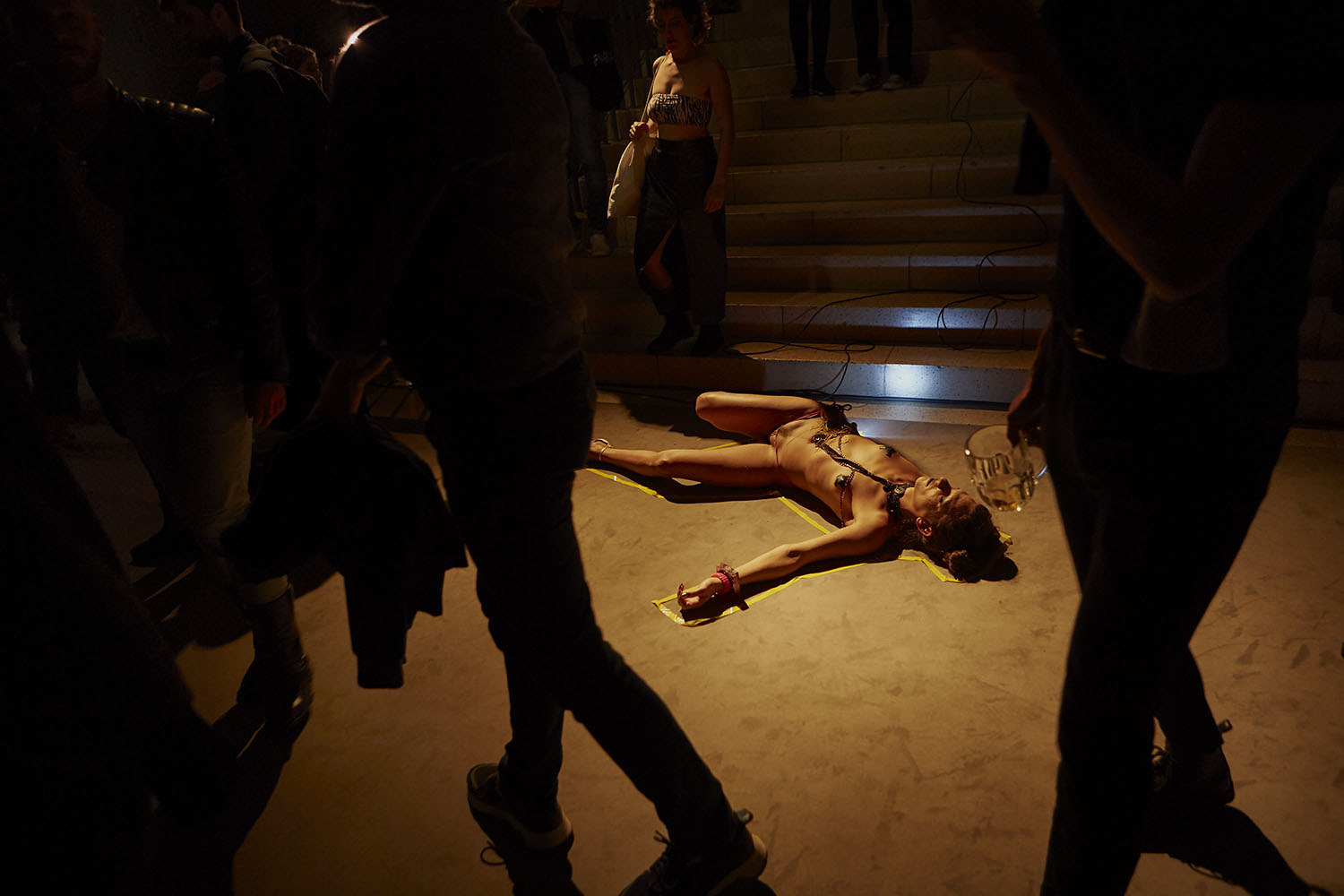Someone told me that Berlin Art Week has long been regarded as the cultural marker that bids farewell to summer and welcomes the vibrant hues of autumn. Indeed, stepping off the plane at Berlin’s airport on a crisp Tuesday morning in early September, I found myself underdressed, sporting light clothing suited for Milan’s lingering warmth. Despite my best efforts to follow weather forecasts religiously, the refreshing Berlin breeze caught me by surprise, forcing me to make a pit stop for a sweater and hat before fully embracing the art-filled days ahead.
Now in its thirteenth edition, Berlin Art Week has grown exponentially from its humble beginnings in 2012, when it featured just eleven participants. In 2024 the festival boasts more than one hundred partners, including museums and emerging independent projects, making it one of the most exciting art events in Europe. The atmosphere buzzes with creative energy, with Berlin’s unique ability to balance grandiosity and grassroots efforts on full display.
At the heart of the 2024 edition lies the Gropius Bau, a historical and architectural gem that plays host to a variety of workshops, events, and talks during the week. The museum’s new director, Jenny Schlenka, who took over in 2023, has been committed to opening up the institution to engage in dialogue with the city of Berlin and its diverse communities. Her vision for inclusivity and interaction aligns perfectly with this year’s art week.
In this spirit of openness, Gropius Bau kicked off the event with a solo exhibition by renowned Thai artist Rirkrit Tiravanija titled “DAS GLÜCK IST NICHT IMMER LUSTIG” (Happiness is Not Always Funny). This exhibition displays about eighty works spanning from the late 1980s to the present, all designed to blur the lines between life and art. Tiravanija’s art, known for bringing everyday activities into the museum, particularly through communal meals and performances, encapsulates the inclusive and communal ethos that Gropius Bau strives to embody.
Just a stone’s throw away from Gropius Bau, the Schinkel Pavillon presents a striking tribute to Sigmar Polke (1941–2010), one of Germany’s most influential contemporary artists. The exhibition, titled “Der heimische Waldoboden. Höher Wesen befahlen: Polke zeigen!”(Higher Beings Commanded: Show Polke!), curated by Bice Curiger, offers a deeply personal look at Polke’s work and life. Curiger’s connection to Polke dates back to 1974, when she wrote an in-depth essay on his artistic approach, sparking a lifelong friendship.
The two floors of the Schinkel Pavillon are filled with around forty works, including large-scale paintings and never-before-seen photographic series. The pavilion, with its unconventional layout, challenged the team to find inventive solutions for displaying museum-caliber works, many of which come from major international institutions and private collections. The exhibition spans Polke’s entire career, presenting works from the 1960s to the 2000s, encompassing his experimentation with various media, from painting and photography to textiles.
The show is not your standard retrospective but rather a study of Polke’s complexity as an artist. It showcases his playful irony, fascination with visual contradictions, and his prescient critique of societal and political issues. His artistic commentary feels as relevant today as it did during the Cold War, a reminder of Polke’s brilliance in questioning the norms of the time and exploring the ever-blurring lines between art, politics, and everyday life.
Another must-see exhibition during the week is “After Images,” a group show at the Julia Stoschek Foundation, curated by Lisa Long. This exhibition is significant for being the first at the foundation not exclusively focused on time-based media like video and film. Instead, “After Images” explores the very nature of seeing, a concept that extends beyond simple visual perception.
The inspiration for the exhibition stems from David Howes’s 2005 anthology Empire of the Senses, which discusses how perception is shaped by cultural, biological, and psychological factors. This idea, along with Sergei Eisenstein’s theory of montage in his 1937 essay “Montage and Architecture,” underpins the curatorial direction. Eisenstein posits that our movement through space creates a sequence, a kind of montage, which our mind interprets as it navigates and interacts with its surroundings.
The exhibition unfolds across two floors of the foundation, featuring works that challenge the boundaries of time-based art. Ghislaine Leung’s Monitors (2022) records and plays back the movements and sounds of visitors in different rooms, creating an ever-evolving dialogue between viewer and space. Lotus L. Kang’s In Cascades (2024), a massive photographic installation in earthy red, yellow, and orange tones, dominates the first room. The piece, questioning the very nature of time-based media, is deeply tied to the transformation of film over time, influenced by external conditions.
Other highlights include Escape From The Shade 5 (2016) by Anicka Yi, a mesmerizing light sculpture, and LABOUR’s Tower of Silence (2024), a grand installation commissioned specifically for the exhibition. Together, these works create a sensory experience that pushes the boundaries of what we perceive as time and space.
At KINDL, Berlin’s former brewery turned art space, several exhibitions unfold, each tackling contemporary issues with boldness and thoughtfulness. One standout is the group show “The New Subject: Mutating Rights and Conditions of Living Bodies,” curated by Anna Baktina and Maria Veits of the Creative Association of Curators TOK. This exhibition critically examines the historical and ongoing control of the female body, providing a timely reflection on how societal, political, and legal systems have sought to dominate and define it. KINDL’s Kesselhaus also hosted Alfredo Jaar’s site-specific installation The End of the World. Jaar’s work delves into human greed and exploitation of natural resources, raising haunting questions about the future of our planet. As we stand on the precipice of environmental collapse, Jaar’s message feels urgent and resonant.
Reethaus presented SILT (2024), an audio-visual installation by Ona Julija Lukas Steponaitytė, Iida Jonsson, and Ssi Saarinen. This piece addresses the environmental impact of Soviet-era agricultural projects in Lithuania, focusing on the formation of a new lake near Likančiai. The work reflects on the unintended consequences of industrial progress, in this case a decades-long accumulation of water that altered the landscape and disrupted local agriculture. The piece draws from a Lithuanian folk saying, “When you name a cloud, it becomes a lake,” which serves as a poignant metaphor for how we confront — or fail to confront — environmental challenges.
Berlin Art Week 2024 not only demonstrates the city’s openness to artistic experimentation but also its commitment to engaging with pressing global issues — from the exploitation of natural resources to the control of the human body. Whether it’s through site-specific installations or deeply personal retrospectives, Berlin Art Week 2024 invites its visitors to ponder, engage, and perhaps even challenge their perceptions. Autumn may have arrived with a crisp chill, but the warmth of creativity and dialogue ignites every space it touches.

